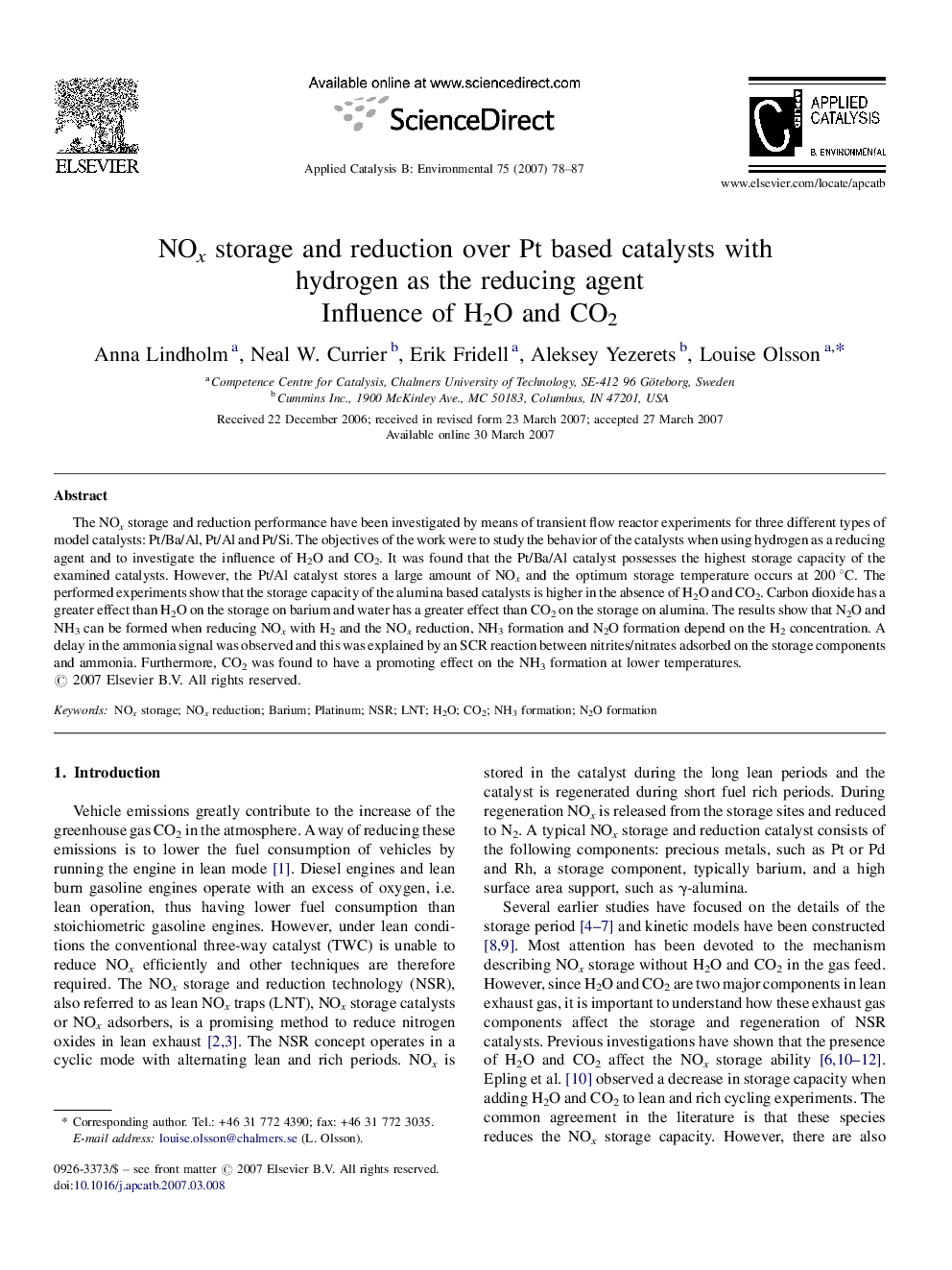| Article ID | Journal | Published Year | Pages | File Type |
|---|---|---|---|---|
| 48573 | Applied Catalysis B: Environmental | 2007 | 10 Pages |
The NOx storage and reduction performance have been investigated by means of transient flow reactor experiments for three different types of model catalysts: Pt/Ba/Al, Pt/Al and Pt/Si. The objectives of the work were to study the behavior of the catalysts when using hydrogen as a reducing agent and to investigate the influence of H2O and CO2. It was found that the Pt/Ba/Al catalyst possesses the highest storage capacity of the examined catalysts. However, the Pt/Al catalyst stores a large amount of NOx and the optimum storage temperature occurs at 200 °C. The performed experiments show that the storage capacity of the alumina based catalysts is higher in the absence of H2O and CO2. Carbon dioxide has a greater effect than H2O on the storage on barium and water has a greater effect than CO2 on the storage on alumina. The results show that N2O and NH3 can be formed when reducing NOx with H2 and the NOx reduction, NH3 formation and N2O formation depend on the H2 concentration. A delay in the ammonia signal was observed and this was explained by an SCR reaction between nitrites/nitrates adsorbed on the storage components and ammonia. Furthermore, CO2 was found to have a promoting effect on the NH3 formation at lower temperatures.
